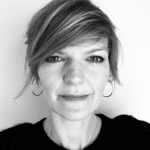
Based on interview with Tinna C. Nielsen, Anthopologist and Inclusion & Diversity expert (Listen to related podcast)
Unconscious biases drive a shocking 90% to 99% of our decision making, and the way organisations are set up only makes it harder to dislodge the disadvantages these biases cause. This not only harms women and minorities, but also introverts and anyone who thinks differently from a supposed norm. It also means a major opportunity cost for firms when people’s ideas and talents are marginalised. Tinna Nielsen, founder of Move the Elephant for Inclusiveness and co-founder of Inclusion Nudges, discusses ways in which firms can redesign their organisational processes and culture to fully leverage all the diverse skills and talents hidden within their ranks.
Firms and individuals have long bought into the idea of fostering inclusion and diversity in their organisations, to properly take advantage of all their employees’ different perspectives and skillsets. However, years of diversity training and programs have unfortunately not made as much impact as many had hoped, because of lurking unconscious biases.
The human brain has two different systems or ways of thinking: the rational mind and the unconscious system. Diversity trainers tend to speak to the rational mind, appealing to conscious thought processes. However, it is actually the unconscious system, which Nobel Prize Winner Daniel Kahneman calls “System One”, that drives about 90% to 99% of human behaviour and decision making. People might buy into rational arguments and business cases directed towards the conscious mind, but this is not the system doing our behaviour. It is in ‘speaking’ to the unconscious mind that you see more tangible results.
Psychologist Jonathan Haidt offers an analogy of the brain with two systems of very different size and influence on behavior. The unconscious mind is like a six-ton elephant, and the conscious and rational mind is like it’s rider. The rider understands the business case and why inclusion is important, but can only attempt to steer us in the right direction. We need to appeal to the elephant, which uses a completely different language—one that needs to be framed in a particular way that triggers the unconscious biases and changes these from being barriers to being levers that makes us move in the right direction.
What really needs to happen is a fundamental redesign of our organisations and decision-making processes as well as how we facilitate meetings, and who has the power and the opportunities. The most effective approach applies behavioural insights from economics, psychology, neuroscience and anthropology to design interventions aimed at nudging the unconscious mind towards being more inclusive. It mitigates unconscious biases without having to create awareness around them or even talk about them.
What is inclusiveness?
Inclusiveness is about leveraging the fact that human beings are different, with different views on a problem, and different ways of dealing with an issue. We perceive things differently, and we have different experience, knowledge, competences, and skills. Being inclusive means actually putting that into play. Unfortunately, today everything from societies, cities, and organisations, to workplaces and decision-making processes, and any kind of meetings facilitation and recruitment, is designed unintentionally to exclude new information, ideas, and people who look, think, or communicate differently from the majority, or the implicit norm in the group.
New ideas are often excluded because the human mind does not feel comfortable with the unfamiliar. We recognise knowledge that is familiar to us, thus we find it to be more valid. We recognise people who look like the others in that organisation or in that community or tribe. Because of the way we have designed our organisations and our cities and societies, we exclude rather than include, and that is a waste of human potential.
Inclusiveness should be the default and the norm, and just talking about it while it is in vogue will not be enough. The challenge is in the execution.
Redesigning meetings
Think about the amount of time we spend in meetings. How effective are they? Some people always speak more than others. There are myths out there that women speak more than men, when in fact it is often the opposite in professional settings. Women get interrupted almost three times as often as men, and there are similar dynamics between introverts and extroverts. We know a lot about group dynamics, conformity and group think. There is a lot happening in meetings.
If we want to make sure we tap into the diversity of skills, perspectives and knowledge in the room, we need to design meetings in such a way that we actually get access to people’s mind and all that diversity and those skills.
The traditional way to facilitate team meeting is the team leader giving the participants three minutes each to say what they are working on. The problem is people often just zone out and wait for their turn, without really listening to what their colleagues are saying. One way to make sure people actually listen – and thus leverage the diversity in the room – is to create a hook in their brain, by asking everyone to listen to their colleagues speak and then say at least one thing which correlates with the things they themselves are doing. As a team, we should all be working towards the same goals. If you create that hook, people will listen differently. However they should have the chance to write this down before they are influenced by what others in the team say in response.
Group conformity leads to poor decisions and can have serious consequences. To mitigate group think in meetings, a meeting facilitator could ask everyone to write down an argument for or against what is being said, or to write down their innermost critical voice, or two to three perspectives to bear in mind in the task at hand. This gives people the opportunity to write down their perspectives before they start influencing each other. They don’t have to write their names on it, in fact doing it anonymously gives them the psychological space to think critically. This gives the organisation access to the real diversity of thought and experience within a team, and is one way to facilitate meetings in a more inclusive way.
Other ways to encourage inclusiveness within an organisation include displaying images of diverse leaders and role models, for example showing an equal number of men and women. What we see is what our unconscious mind believes to be competent. If we only see images of older white men in senior leadership roles, it will influence our biases and unconscious associations. Research has shown that seeing role models we can identify with makes a significant difference and directly influences the performance of people within an organisation.
Recruitment is another area of decision making that is prone to being influenced by unconscious bias. Many firms have already recognised this and have made efforts to anonymise candidates, removing identity data and pictures. There are many technology solutions coming out of Silicon Valley or being spun off from the Behavioural Insights team in the UK.
Firms can also change the way they look for internal candidates. Asking leaders which individuals in their team is ready for promotion often leads to them looking for people who are similar to them as that is what they recognise as competent. You end up with a homogenous group of people. If you flip the default and assume everyone in the department is ready, now the leaders must find arguments for why each person would or would not be ready. You end up with a more objective and inclusive result based on skills and experience.
A more inclusive decision-making culture would help narrow the gender pay gap. The pay gap might not even be because of a bias, but rather a reproduction of an old pattern. Many organisations today ask people to share with them their previous pay or their pay average throughout their career. This creates a flawed baseline. A more inclusive approach would be to negotiate based on the average salary for a person doing this particular job. Telling employers what you got in your previous job just means you bring the pay gap with you.
Men and women also perceive their own skills and level of competence differently. While women would undoubtedly benefit from training in how to negotiate, not everyone will have access to such training. This is why systemic change is important. If an organisation wants to be inclusive, it should be transparent so everyone knows they are being paid a fair amount compared with their colleagues. If organisations don’t want to do that, individuals can take the lead on it themselves. If people start speaking more openly about what their pay is, they will have a fair baseline for negotiating.
What systemic change will we see in the next few years?
Over the next few years we will start to see a redesign of processes. We cannot remove biases from the human mind, but we can design a system and organisational processes where these are mitigated. We can change how much biases influence us in both a positive and negative direction. In this world of fast-paced technology development, technology will have a role to play, although it is not the whole solution. Things like artificial intelligence and big data need to be very carefully implemented, because the potential biases of the developers can end up being unconsciously baked into the algorithms they design. Firms need to make sure they have behavioural science specialists as part of the team when redesigning their organisation’s processes, and when collaborating with tech entrepreneurs.
Firms will benefit from having a global head of inclusiveness and diversity to carry out an initial audit of their existing processes and work to drive change and make improvements internally. An external consultant cannot simply impose change from the outside. However, it is imperative that firms hire someone with the requisite skills of organisational development and behavioural insights for such a role, rather than looking to promote someone from within the company that knows the firm and its systems well, but maybe doesn’t have that particular background. Without those skills it will be very difficult to navigate and make an impact.
More information
Inclusion Nudges is a global non-profit initiative and community of people nudging for inclusion in organisations, communities, and societies. Inclusion Nudges are practical interventions designed by ‘practitioners’ and ‘change makers’ based on insights from behavioral and social science to mitigate unconscious bias and promote inclusiveness. In this community thousands of people share Inclusion Nudge examples to inspire and enable each other to make a difference.
You can join now – it’s free for all. Visit http://inclusion-nudges.org/
You can download a 40 page free pdf of the Inclusion Nudges Guidebook or purchase the full guidebook with 70 Inclusion Nudges: http://inclusion-nudges.org/
You can get your Weekly Inclusion Nudges here: http://inclusion-nudges.org/weekly-inclusion-nudge/

